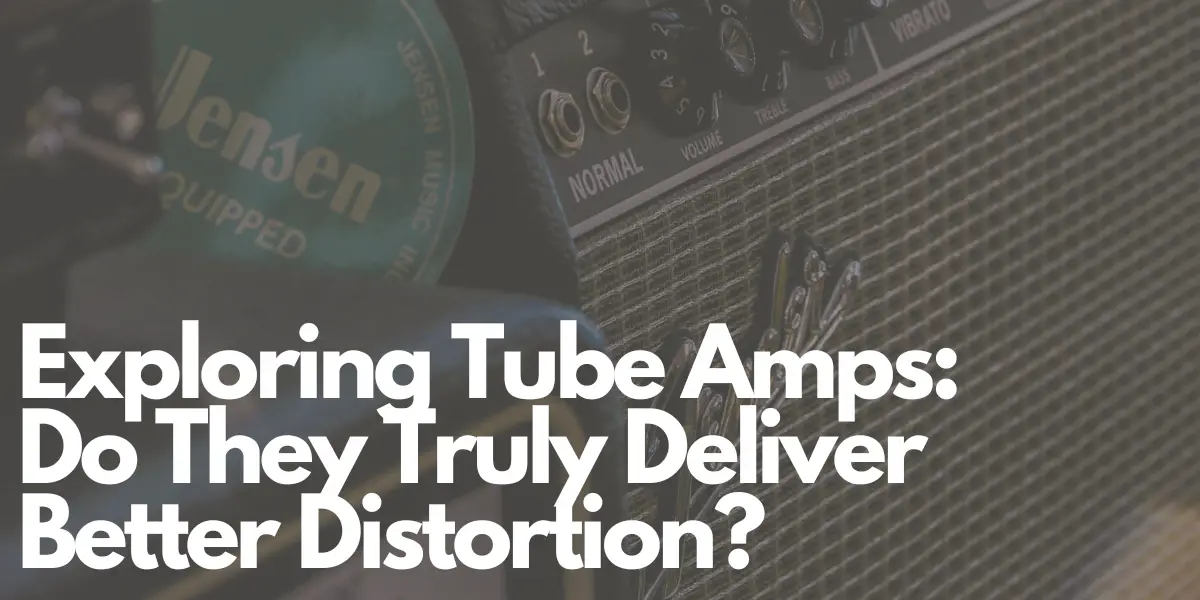When it comes to the world of amplifiers, one question that often arises is whether tube amps have more distortion compared to their solid-state counterparts. The answer is a resounding “yes.” Tube amps, also known as valve amplifiers, indeed exhibit a unique and often sought-after form of distortion. In this article, we will delve into the reasons behind this characteristic distortion, explore its merits, and provide some tips on how to make the most of it in your music setup.
The Essence of Tube Amps
Tube amps employ vacuum tubes, which are electronic components that manipulate the flow of electrons to amplify the audio signal. This process is fundamentally distinct from the operation of solid-state amps, which rely on transistors to amplify the signal. Transistors function by switching the flow of electricity on and off, allowing or blocking the passage of current.
The Nature of Tube Distortion
The primary reason tube amps are associated with more distortion lies in the harmonic characteristics they produce. Tube amps generate even-order harmonic distortion, a type of distortion that is often considered more pleasant to the human ear compared to the odd-order harmonic distortion produced by solid-state amps.
Even-order harmonic distortion adds a warmth, richness, and sustain to the audio signal, enhancing the overall listening experience. This characteristic distortion is a significant reason why many guitarists and audio enthusiasts prefer tube amps for their setups.
The Role of Dynamic Range
Another aspect contributing to the increased distortion in tube amps is their lower dynamic range compared to solid-state amps. Dynamic range refers to the difference between the softest and loudest sounds an amplifier can reproduce. Tube amps have a narrower dynamic range, which means they are more prone to signal clipping when pushed to their limits, resulting in the desirable distortion.
Making the Most of Tube Distortion
If you are using a tube amp and want to harness the unique distortion it offers, here are some tips to help you achieve the desired sound:
- Push the Amp into Overdrive: Tube amps truly shine when pushed into overdrive. This process involves cranking up the volume to the point where the tubes start to saturate and produce distortion. However, exercise caution not to overdo it, as excessive overdrive can damage the tubes.
- Use an Overdrive Pedal: For precise control over the level of distortion, consider using an overdrive pedal. These pedals come in various flavors, allowing you to tailor the distortion to your liking and easily switch it on or off as needed.
- Leverage the EQ Controls: Most tube amps are equipped with EQ (Equalization) controls. Experiment with these to boost or cut specific frequencies. Boosting the mids, for instance, can increase the amount of distortion, while cutting the mids will reduce it. Fine-tuning these settings can help you achieve your desired sonic character.
In conclusion, tube amps do, in fact, introduce a distinctive form of distortion into the audio signal, characterized by even-order harmonic distortion and a penchant for overdrive. This distortion adds warmth and richness, making tube amps a preferred choice for many musicians and audio enthusiasts. By understanding and optimizing the characteristics of tube distortion, you can unlock new dimensions of sonic creativity in your music.
Author: Mike P
Hi! My name is Mike! I’ve been an apartment producer/musician for 10+ years. I’ve played in punk bands, released EDM tunes on Beatport and iTunes, and have a semi-successful stock music portfolio. Read more…



